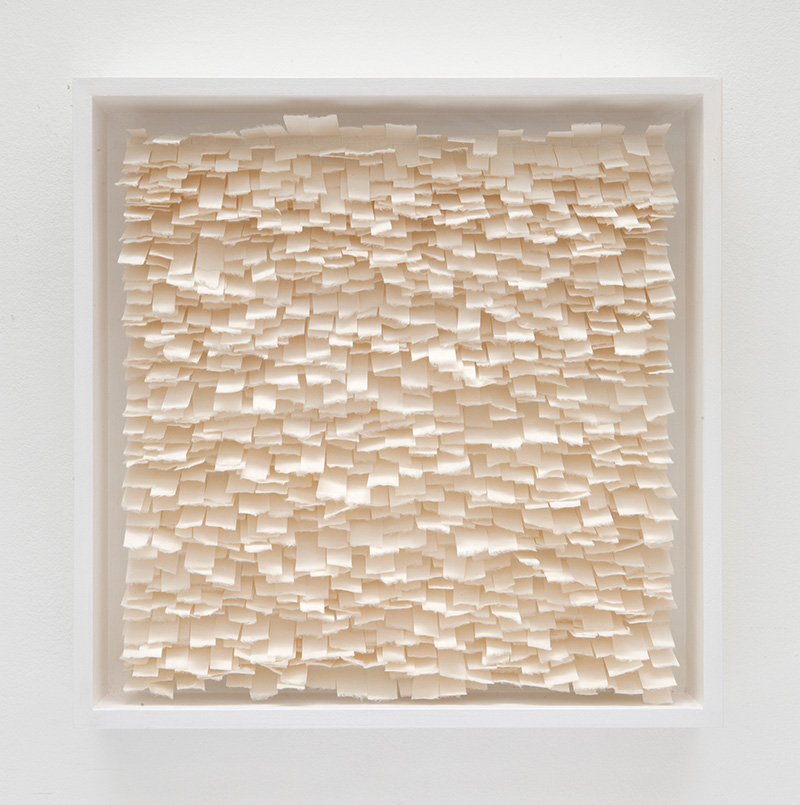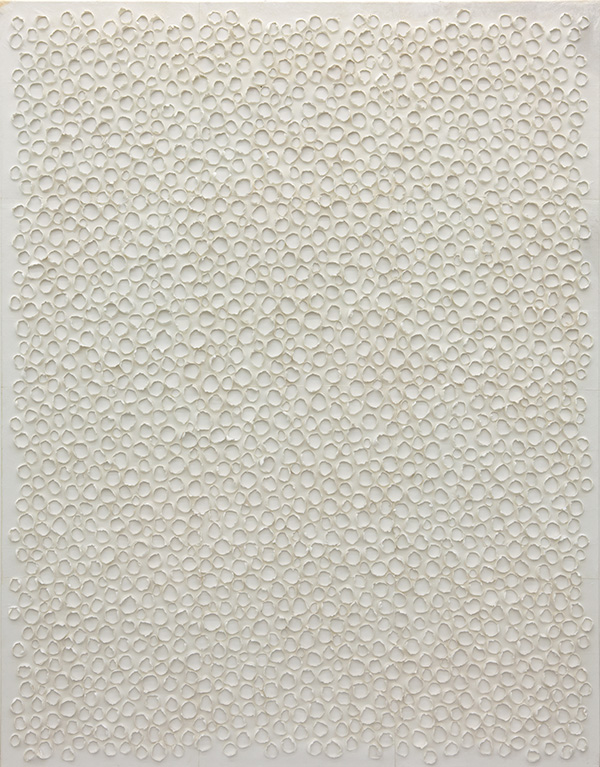ART-PRESENTATION: Systemic Paper
 In 1966 Laurence Alloway organized “Systemic Painting”, a landmark survey of geometric abstraction, at the Solomon R. Guggenheim Museum in New York. In his introductory essay for the catalogue of the exhibition Alloway identifies a field of increasingly popular geometric abstract paintings, artworks containing a simple, methodical, organization exploring repetition and pattern.
In 1966 Laurence Alloway organized “Systemic Painting”, a landmark survey of geometric abstraction, at the Solomon R. Guggenheim Museum in New York. In his introductory essay for the catalogue of the exhibition Alloway identifies a field of increasingly popular geometric abstract paintings, artworks containing a simple, methodical, organization exploring repetition and pattern.
By Efi Michalarou
Photo: Blum & Poe Archive
The first to coin the term “Systemic Painting”, Laurence Alloway discusses the flexibility of the term, which can encompass anything from Frank Stella’s shaped canvases, Kenneth Noland’s Color Field paintings, or the Hard-edge style defined by art historian Jules Langsner, to the simple, but detailed, repetition found within early Minimalist works by artists such as Jo Baer and Agnes Martin. In the group exhibition “Systemic Paper” at Blum & Poe Gallery in Tokyo, is on presentation works by three artists famed for their work with paper. Kwon Young-woo, Rakuko Naito, and Dorothea Rockburne began their careers in the ‘60s when minimalist and systemic practices in all media were at their height. Few contemporary artists have prioritized paper not merely as a ground for painting or drawing but as an active material in its own right, fewer still have approached it from a systemic, modular, or mathematical perspective. Kwon Young-woo was one of the founding figures of Dansaekhwa. Schooled in ink-painting traditions, Kwon forged a new direction in the ‘60s by abandoning the use of ink and scratching the surface of the delicate, multilayered hanji paper with his fingernails. Leaving his works untitled or assigning them ordinal numbers that referred to their order of creation within a given year, Kwon quietly persisted with an iterative, serial practice. Rakuko Naito studied traditional Japanese paintingat the Tokyo National University of Art. After graduating in 1958 she moved to New York. Her early acrylic paintings were geometric and Op compositions that emphasized flatness and avoided any trace of the artist’s hand. Her interest in geometry carried over into paper: she sees the natural forms and textures of the material as having a reality that transcends the limits of painting and drawing. Since the ‘90s she has explored the texture, pliability, and strength of Japanese kozo washi. This exhibition features varied examples of these sequentially-titled assemblages, which are composed of folded, layered, and rolled strips of paper that build up into grids, stacks, and swirls. Dorothea Rockburne studied at the Black Mountain College, Asheville from 1950 to 1952. There she was deeply influenced by the teachings of German mathematician Max Dehn, who introduced her to topology, the ubiquity of geometry in nature, and the concepts of harmonic intervals. Since the beginning of her career, Rockburne’s work has reflected a profound interest in the intersection of art, mathematics, science, and philosophy, particular the Golden Mean, set theory, astronomy, cosmology, and the Egyptian use of proportion and light. She has produced various series of monochromatic works that reveal the processes by which they were made; she cuts, marks, and folds her materials, which include carbon paper, metal, canvas, and chipboard.
Info: Blum & Poe Gallery, 1-14-34 Jingumae, Shibuya, Tokyo, Duration: 15/4-17/6/17, Days & Hours: Tue-Sat 11:00-19:00, www.blumandpoe.com

